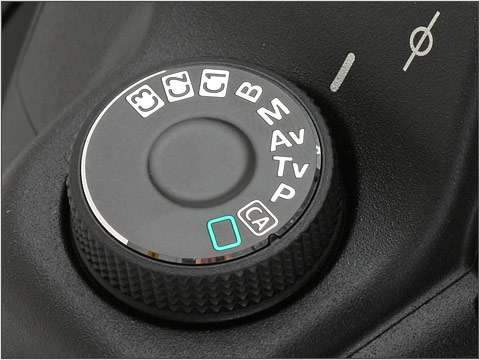Changing camera settings on a dive
Here are some ideas for how to vary your underwater camera settings during a dive. Please see the section "initial settings'" for how to initially set up all of your settings for macro or WA. Some of the settings from that section are repeated here for clarity.
Shooting macro
Using a DSLR
Change your aperture depending on the depth of field you want. In generally, you'll be dialing in a smaller aperture (e.g. F16-F29) for very close subjects, and dialing back down (F5.6 - F11) for fish further away. Note - a common mistake is trying to shoot a fish far away at F22. It will be very underexposed, since your strobes won't have the necessary power. you must "dial down" to a larger aperture first.
Use a single focus point, and move the focus point around as needed to properly compose and focus on the key area of the subject.
Using Compact underwater camera
Keep your f-stop at F8 for maximum depth of field. Make sure you are in macro mode. Get close, get low. Think about your composition. Adjust your strobe power as needed based on the subject to lens distance.
Press the shutter half-way to focus, recompose and shoot
Shooting supermacro
Get your camera lens to "hunt", then wait until the magnification is 1:1, or at its maximum.
Switch to manual focus. Find a subject, then rock back and forth, take the shot when the subject is in focus.
Alternatively, use a focus ring, or use continuous focus mode and shoot when the subject is in focus
Adjust the aperture according to the aperture section.
Shooting reefs, Wide Angle
Direct your dive buddy behind the subject if you want a model in the shot.
Remember the basics - changing your shutter speed effects your background exposure.
I'll usually keep my aperture around F7 or F8, however...
For subjects very close to the dome port, you might want to increase your f-stop to F11 or F16 for maximum depth of field.
Also, when shooting into the sun, I'll put my shutter speed at the fastest it can go (strobe sync speed), and stop my aperture down to F11 - F22, depending on the brightness of the sun, and make sure my strobes are close to the subject. Alternatively, turn your strobes off, turn them out to the sides, or set your shutter speed faster than the camera sync speed for a silhouette shot without any strobe-lit subject. When shooting with strobes, I have to remind myself to do this more often.
Remember to get low, shoot up, try to get a prominent subject in the photo.
Check your histogram afterwards and change settings, reshoot if needed
You can also read the articles on basic macro and wide-angle composition, wide-angle technique, or shooting close-focus wide angle.
Checking your histogram
Check for blown-out highlights via the histogram or highlights screen
Expose slightly to the right
Read the histogram section for more details
Waiting for pelagics
preset your aperture, shutter speed, and strobe positions if you think you might see a fast-moving pelagic
you might even want to prefocus and switch to manual focus, so there will be no delay from your lens hunting.
Shooting action,
Switch to burst mode on your dSLR to shoot at several frames a second.
set strobes on low power for faster recycle time. increase ISO if needed, do a test to see how fast you can shoot as still have your strobes keep up. The higher your ISO, the quicker your strobes will recycle. Remember as you increase your ISO, you'll have to make your shutter speed faster to block out ambient light.
What if there is nothing of value to photograph?
- explore the scene from all angles
- look for abstract designs, textures
- look for opportunities you usually don't shoot, maybe black and white, silhouettes, panning shots, or designs that can be post-processed
Underwater - focusing on your subject
Most people use an underwater focus light to help their camera focus on the subject. I personally prefer to use a dive light such as a wrist-mounted canister light, or a small bright dive light such as a 6AA Ikelite PCa. This allows me to signal buddies to show them subjects, the light doubles as a night light, and don't have to continuously readjust my focus light.
Some photographers worry about getting hot spots from dive lights, but I have never had that problem, due to usually shooting at higher apertures. If I shoot at a lower aperture, I'll move the dive light out of the way at the last second before pressing the shutter.

RECOMMENDED ARTICLES
SUPPORT THE UNDERWATER PHOTOGRAPHY GUIDE:
The Best Service & Prices on u/w Photo Gear
 Visit Bluewater Photo & Video for all your underwater photography and video gear. Click, or call the team at (310) 633-5052 for expert advice!
Visit Bluewater Photo & Video for all your underwater photography and video gear. Click, or call the team at (310) 633-5052 for expert advice!
The Best Pricing, Service & Expert Advice to Book your Dive Trips
 Bluewater Travel is your full-service scuba travel agency. Let our expert advisers plan and book your next dive vacation. Run by divers, for divers.
Bluewater Travel is your full-service scuba travel agency. Let our expert advisers plan and book your next dive vacation. Run by divers, for divers.































